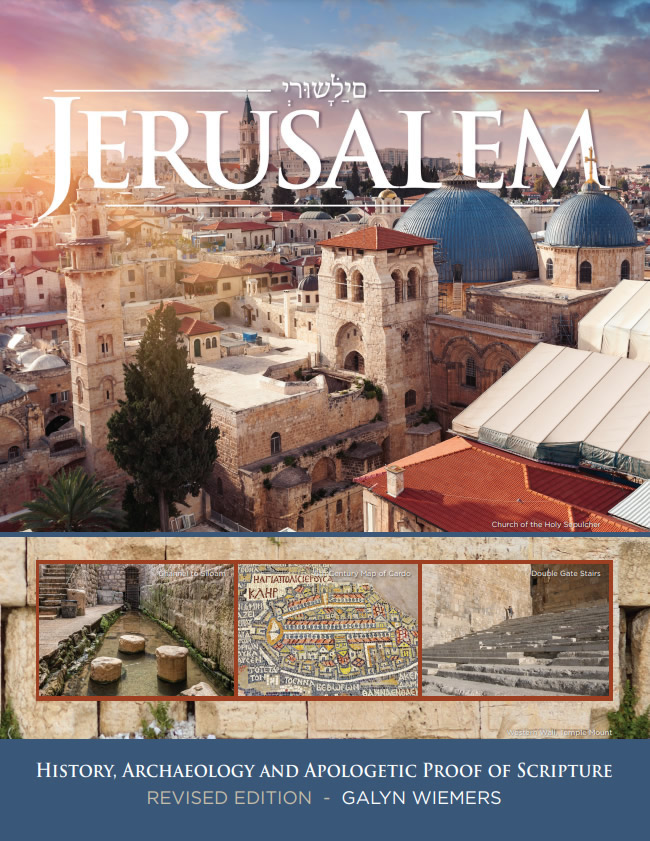| 25- The Garden Tomb | ||||||
This site is called Gordon's Calvary because in 1883 British General Charles Gordon suggested that this outcropping of rock just across the street from the north city wall was Golgotha, the Place of the Skull. The proposal that this was the original Calvary gained some momentum since a garden tomb had been found near this location in 1867. This site soon began to challenge the legitimacy of the Church of the Holy Sepulcher as the location of Jesus’ crucifixion, burial and resurrection. This is an interesting location but there are many reasons why it cannot be the actual site. Notice the impression of a face that can be seen in this rock: the two eye sockets in the middle of the photo with the forehead above, and the bridge of the nose below. |
||||||
About 300 feet to the left (west) of the "skull" of Gordon's Calvary is a rolling stone tomb (there is a track or groove cut in the rock in front of the entrance of the tomb for a rolling stone) with a burial bench inside. This tomb was discovered in 1867, and because of its proximity to "the Skull" it was assumed by the British to be the tomb of Christ. Of course, this assumption went against 1,800 years of history and tradition (and now, today, archaeological evidence as well) that pointed to the Church of the Holy Sepulcher as being the authentic place of Jesus death, burial and resurrection. This tomb was not an unused “new” tomb in the time of Christ, nor did Joseph cut it in the first century. Tombs of the New Testament era had burial chambers, or burial benches, cut out of rock behind the entrance room (called the vestibule), similar to those seen in the Church of the Holy Sepulcher. The style of this tomb, however, is typical of tombs from 800-600 BC, with two burial benches cut into the wall. The Byzantine Christians of 300-600 AD did not consider this a holy site, since they cut down the burial benches to create a sarcophagus to bury their dead. Even the Christian Crusaders used this site as a stable. |
||||||
Notice the burial bench was carved away by the Byzantine Christians to create a rock sarcophagus. |
||||||
A carved water channel cut in the pavement in front of the tomb entrance |
||||||
Galyn steps out of the Garden Tomb. One of the reasons this site is promoted by Protestant groups and receives attention in Protestant Bible dictionaries, atlases, and other study books is because the Protestants are newcomers to Christianity and have no designated place in the Church of the Holy Sepulcher. Protestant groups did not emerge from the Roman (Latin) Catholic branch of church history until the 1500 and 1600’s, long after the church building was controlled by six ancient Christian “denominations” powerful in the Eastern World – Latin Catholic, Greek Orthodox, Armenian, Syrian, Coptic, and Ethiopian. In fact, many Protestant churches show no interest in Jerusalem or the Holy Land at all. Nonetheless, the Garden Tomb is not the original site of Jesus’ burial and resurrection. There is no reason to even consider this location, other than the fact that it is a tomb outside the walls of Jerusalem. But then, there are hundreds of tombs outside the walls of Jerusalem, many with outcroppings of rock near tombs set in ancient gardens. This site is interesting, but it is not unique. |
||||||
 |
UPDATED! 2022 - |
JERUSALEM: HISTORY, ARCHAEOLOGY AND (click on the book cover to download the book as a .pdf ) |
|
|
|
|
|